

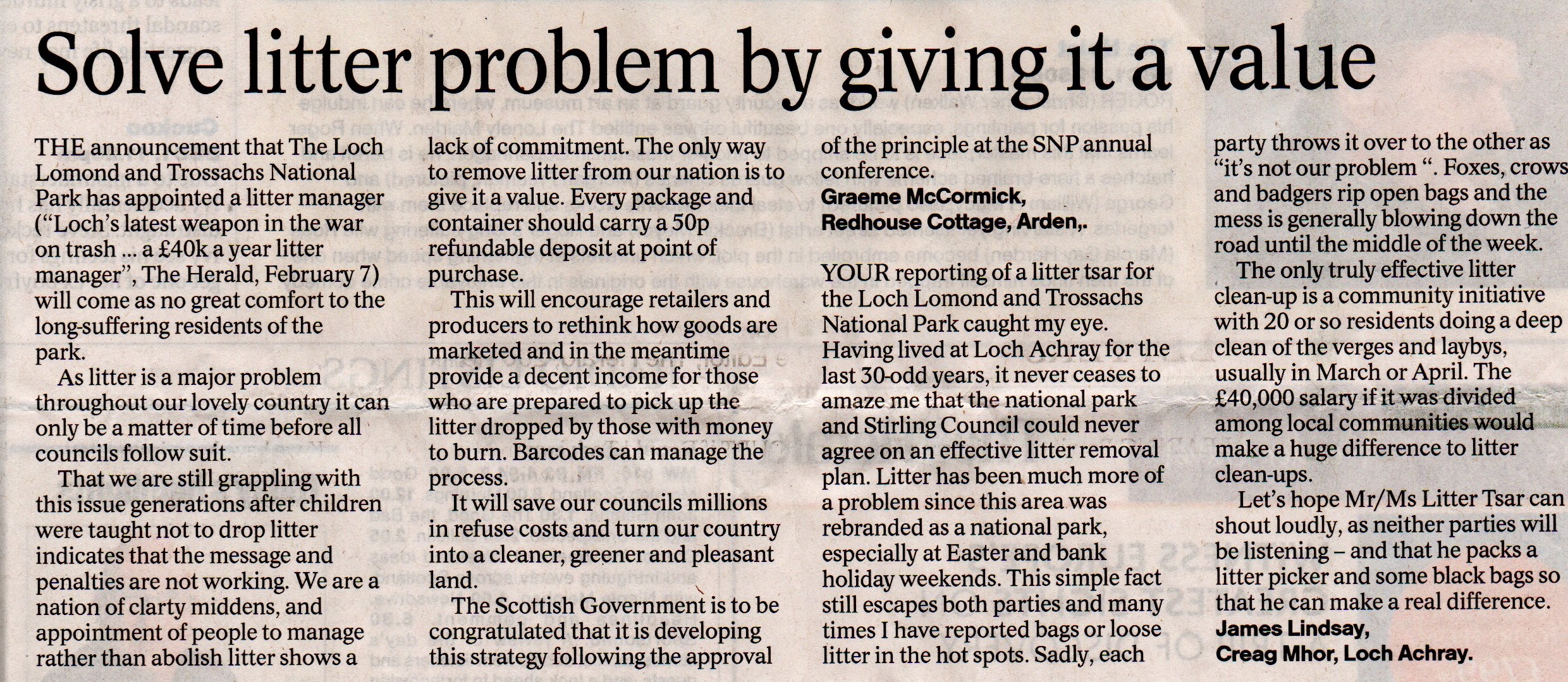
The litter problem in the National Park

The starting point for any strategy should be an accurate account of the extent of the litter problem in the National Park. The LLTNPA has always been reluctant to do this because doing so would confirm that campers are NOT the main cause of litter.
Fly tipping is a major issue and, as Dave Morris’ photos of Loch Iubhair show, the problem is still being largely ignored. Its shocking that at a major Park promoted layby/stopping off place such as Loch Iubhair piles of dumped materials can remain in place for six weeks or more.
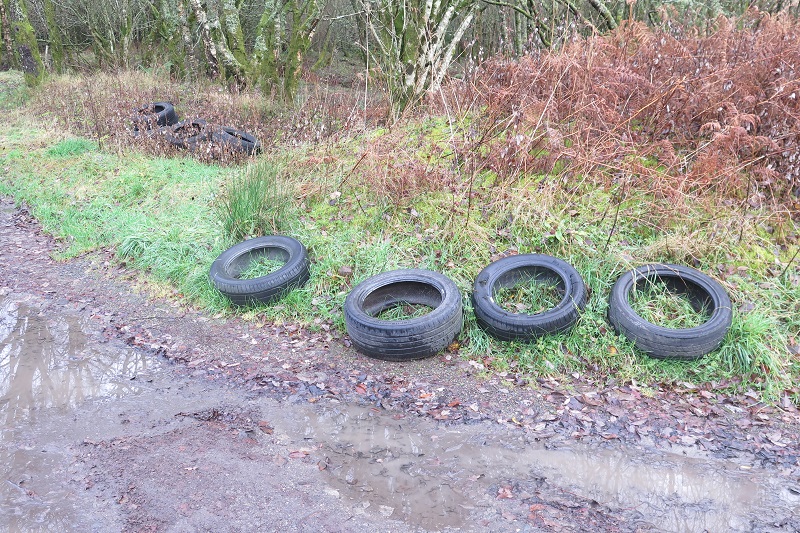
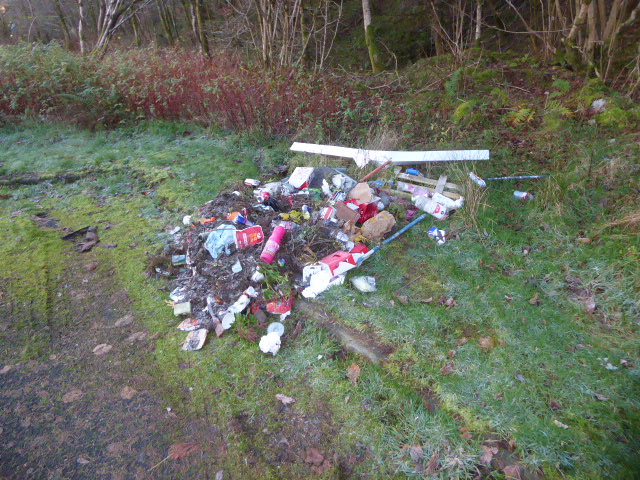

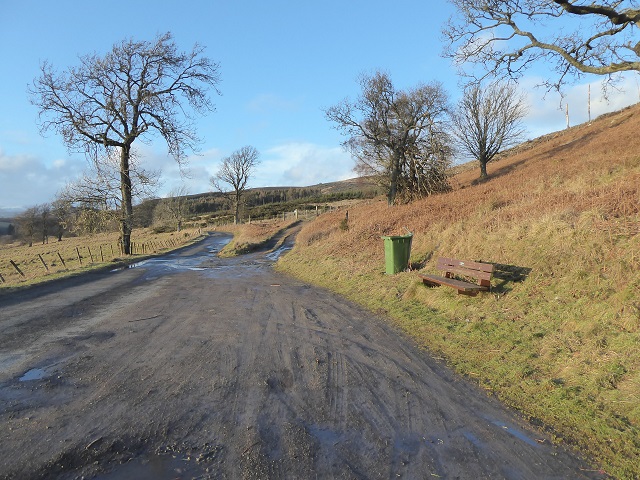
The LLTNPA’s focus is still misplaced
The paper on litter discussed at the September Board strategic session (see here) was not primarily about litter in the National Park as a whole, though senior staff had “recently stepped up engagement with partners” and held a meeting with Argyll and Bute Council (not before time!). Instead it focussed on how the LLTNPA manages litter on the sites it owns. That appears a consequence of the paper being produced by the Corporate Services Manager, Jaki Carnegie, rather than the Park’s Director responsible for conservation and visitor management, Simon Jones. The paper provides some interesting information but rather than taking a critical look at what the Park has done to date balmes others: “The biggest challenge in managing litter on our sites is public attitude”, for example people leaving rubbish by bins that are full; and has a section on “Businesses behaving badly”.
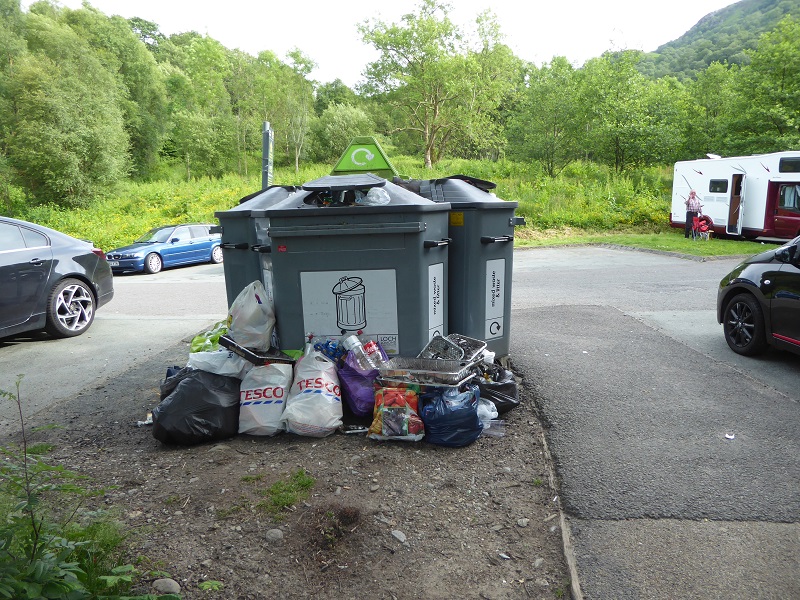
In terms of litter prevention and enforcement, there is a huge contrast between the effort the LLTNPA has put into banning campers compared to stopping litter. The September Board Report states that the Park Ranger service issued just 3 Fixed Penalty Notices for litter between January and September 2018. Shortly after that meeting, the LLTNPA issued a news release (see here) about one case it had taken in relation to fly tipping, as if to persuade the Board staff were doing something.
Section 5.14 of the Annual Report to Ministers on the Camping byelaws (see here), which the Board approved in December, shows the LLTNPA has done very little suggests that almost all action taken to date has been against campers:
- “As part of standard practice for byelaw management 931 individuals’ details
were taken and advice given in relation to alleged contraventions of Camping
Management Byelaws 2017. - From this total 12 byelaw cases were reported to the Crown Office, four by
National Park Rangers and eight by Police Scotland. - Three of these reported cases (one reported by the National Park and two by
Police Scotland) also included offences under the Environmental Protection
Act for camping related fly-tipping. - During the same time period National Park staff issued one Fixed Penalty
Notice for camping related fly-tipping which was subsequently paid and
reported one camping related fly-tipping case to the Crown Office.”
Out of 931 people whose names were taken for camping without a permit, 12 were reported to the Procurator Fiscal and of these three involved littering. In total five campers were suspected of dumping litter, three by the Park and two by the police. That’s five out of 931 or less than 0.5% of campers creating serious litter issues.
What this also means, coupled with the September Board paper, is that until September the Park Ranger service had taken not a single action against any other member of the public for leaving litter. In other words if you are a day tripper who drops litter or someone travelling through the Park who chucks it out the window – and you only have to walk a few metres down the A82 to see how many people do this – the chances of being apprehended are NIL. The reason? The Park is too busy policing campers. This demonstrates that the Park’s efforts to address the litter issue are totally skewed. As a result they will never work.
A much better starting place would be the Friends of Loch Lomond and Trossachs Five Point Action Plan for litter which they issued in May:
- A more joined up approach should be taken to tackling litter issues including more frequent litter clearance at busy weekends and during holiday periods;
- More and larger bins should be provided at busy locations throughout the National Park as exhortations to take litter home in isolation of other measures simply doesn’t work;
- Implementation of the same policy for the A82 on Loch Lomondside as exists along the A9 in the Cairngorms National Park where litter bins are provided in every layby and emptied regularly;
- More rigorous enforcement of litter fines as part of a wider effort to change people’s bad habits and attitudes in relation to discarding litter in the countryside and alongside road verges; and
- More hard hitting litter education campaigns on topics such as single use plastic, recycling and the impacts of irresponsible litter disposal in the National Park.
A Chief Executive out of control?
The Board appear to have had no say in the creation of the Litter Manager post, unless this was agreed at a secret meeting. Normally in public authorities creation of new posts requires Board/Committee approval (in Glasgow City Council where I used to work only Councillors could create, delete or regrade posts). Yet in the LLTNPA there has been no paper to the Board about the new Litter Manager post or what it is intended to do.
Nor is there anything in Board Standing Orders saying when decisions like this are delegated to officers. At the end of last year, therefore, I asked the LLTNPA under FOI about what governance arrangements are in place for decisions such as this. Their response (see here) pointed me to the Financial Memorandum (see here) prepared by the Scottish Government. This gives the Chief Executive delegated authority to implements decisions or programmes of work agreed by the Board.
There is, however, no mention of either a new budget to manage litter or the need for a Litter Manager post in either the Annual Operational Plan agreed in March or the new Corporate Plan agreed in June which put a new focus on litter:
Corporate Plan
Priority 1: Litter
Working in collaboration, we will support a Marine Litter Strategy and drive the development of a cross-organisation National Park Litter Strategy which better utilises our collective capacity with our partners to deal with the litter generated by visitors. We will invest our passion, commitment, resources and powers to deliver positive behaviour change to prevent, and reduce litter in the National Park.
I cannot see anything here that could be taken as authorising the Chief Executive to create this post. It appears therefore that either the Board has agreed this post in secret or the Chief Executive has done so without their say so. I suspect the latter explanation is more likely and, excepting the complete failure in governance, is not a good sign for the future. If the Board has so little control of what posts exist within the LLTNPA, its unlikely they will bring much influence to bear on what any post holder does.
The root of the LLTNPA’s failure to tackle litter
Litter is of course a Scotland, indeed a UK wide issue. The National Park cannot solve it alone or in isolation from actions elsewhere. It should however be in a powerful position to improve the situation in the National Park and indeed give a lead across Scotland. People care deeply about National Parks and if we are going to address successfully a Scotland wide problem there is arguably no better place to start.
The problem is the current Chief Executive has played a large parting in taking the LLTNPA down the blind alley of persecuting campers rather than addressing the much wider issues facing the National Park, including litter. That accounts for four years of failure to tackle the litter issue. He also, as the creation of the Litter Manager post shows, appears accountable to no-one. I would like to be proved wrong but, until these issues are addressed, I doubt the appointment of a litter manager will have much impact on any of the fundamental issues.
I don’t want to get involved in the thorny debate about the camping byelaws other than to say that litter is only one of the problems caused by ever larger numbers of people wanting to camp on our congested loch shores. Therefore, the fact that litter continues to be dumped doesn’t, of itself, undermine the case for camping byelaws. However, my main point is that I’m absolutely shocked that when you say that fly-tipping is caused by local residents and businesses, your response is “I don’t blame them”. Eh??? People need to take responsibility for their own actions, and not always blame others as a first resort. There is absolutely no excuse for dropping litter, whether it be a discarded coffee cup or an unwanted mattress. If there are no bins, or if they are full, litter should be taken home. Do we really want to see lots of litter bins spoiling our scenery (e.g. south Loch Earn), even if they are emptied? The council provides waste disposal options for larger items, sometimes for a fee, but maybe people need to stop and think whether they could make the existing sofa or TV last longer before disposing of it. Our ‘throwaway culture’, always wanting the latest ‘must have’, is part of the problem. The key to solving all this is public education to encourage personal responsibility. If we can change attitudes to drink driving, we as a society can surely change attitudes to littering and fly-tipping. This involves LLTNPA for sure, but also government, councils, schools, parents, residents, businesses…and bloggers. Maybe you should consider your own response to littering and fly-tipping before blaming the National Park.
Hi David, thanks for your comment, I hate litter, am involved in my own local community litter picks and also pick up litter in the countryside – everywhere except the popular places in the LLTNP where I have stopped doing so because of their failure to provide basic infrastructure ( I still pick the very occasional litter I find in the hills) Yes, of course we need more education but the LLTNPA agreed 15 years ago to take a low key approach, tried apparently to educate people and the problem has just got worse and worse. Hence FOLLAT’s five point plan, only one of which is about education. I believe that education needs to be accompanied by infrastructure and the failure to do so is a large part of the problem (as it still is with camping). Then when litter is left lying for weeks and weeks, totally the wrong impression is given – people are far more likely to think twice about what they do with their litter in places that are litter free.
I should have also added I don’t think blaming people helps, that is why I said I could understand why some local residents and businesses contribute to the issue. We need to understand WHY people leave litter and we can only do that by engaging in dialogue.
I suppose that illustrates my point. You clearly “blame” the National Park for not tackling fly-tipping properly, yet you are unwilling to “blame” the people who illegally dumped the stuff in the first place. If you’re unwilling to criticise litterers and fly-tippers, then it seems disingenuous to criticise the National Park for not tidying up after them.
Yes, fair point, I am reluctant to blame individuals and believe this is different to blaming institutions. The reason? If you look at Dave’s photos you need to ask just why has someone travelled to the Loch Iubhair layby to dump rubbish rather than say call the Council to pick it up (as you can do in Glasgow). There are several explanations. Charges for rubbish collection, which you discount. Low paid contractors who go round doing work in the Park who then find it hard to afford to pay for commercial rubbish disposal – a lot of garden vegetation dumped on west side of Loch Lomond comes into this category. So in my view we need to understand what drives the criminality………………and its our institutions that need to lead on this and work out the solutions. The Park has failed to do that and that’s why I feel easier about attributing blame to them rather than nameless individuals.
Hi the only way two stop littering is to go back two the old ginger bottles take it back and get 10 pence on the bottle. The government has two make the company who make the product, responsible for the waste they pass it on two supermarkets who then put a deposit on the packaging any packaging, a tin of beans or shampoo beer pop up tents wee will all take it back to get our 20 or 30 pounds. As for old tyres and t.v. that has to be people living near loch lomond but not always. Council policy don’t help .so again wee need to go back to the old ginger bottles take it back get a pound back and I go further chewing gum the company’swho product it should be taxed for the cleaning of our street’s
Bill
The litter problem is a whole UK problem, I live in County Durham and see the exact same problems as in the Scottish National Parks. People actively go out of their way to dump rubbish along back lanes when often Council refuse centres are nearby. This leads me to believe this is carried out by people with vans who at least in my area need to apply for a permit and I think arrange when they visit. There are also Council collections which cost about £16 for 3 bulky items, but in a time when people are using food banks who can afford to pay. You also have to get the items to the edge of your property.
The stupid thing is, if someone dumped it they could then ring the Council and they would then come out and collect it for free. Why not just collect all rubbish free.
As for the Scottish National Parks, I was recently in Balloch and when I walked from the Tourist information centre towards the Ranger station at the end of Pier road, there was a festival style tent abandoned caught on a hedge about 100 yards from the Ranger station. It was almost as if someone had put it there intentionally, I wonder how long it remained there before it was removed. Maybe it was in protest of the camping ban.
The same day I drove up to the top of Loch Long, where I stopped to take a picture. I was appalled at the amount of rubbish that had washed up. Some of this had clearly been there for some time. Are they going to use some of the parking charge increases to help in the clear up?
Locally I am a member of our local community litter picking group and it’s never ending task. I can’t see this ever being completely fixed, there is something broken in society that people just don’t care or think about their immediate actions. But if its easier to take large item or have them picked up then people will choose the easy option. Having to haul a sofa and piles of rubbish into a vehicle and drive a few miles out of their way to then try to secretly dump something should be a hassle. Making a call and having it picked up for free or for no more than £5 should be easier?
I agree with Bill about there being a charge for items and it being refunded when you return them. Government has been discussing this but as with anything like this they are dragging their feet and the companies are arguing about it. I think something like 50p a bottle/can would certainly make people return it. People would be out actively collecting rubbish to make money.
I can remember 13 years ago walking the WHW in May before the camping bans, there was a huge litter problem. I watched with horror as day trippers dumped rubbish out the windows in the car park. There were tents abandoned with full contents strewn across the shore. These people were not wild campers they were a few hundred yards from car parks. I was a a wild camper and there is no way I would want to camp near the noise and goings on in these places. I was thinking about walking it again next month with my wife, but with the camping restrictions and lack of facilities early in the year I am going elsewhere.
Hi Steve, thanks for very thoughtful comments. In response to your question none of the Argyll and Bute Parking charges at Loch Long are being used to contribute to litter collection there but instead are to enable Argyll and Bute to keep “essential services” going. They are in effect a tax on access and far far higher than anyone is proposing for a tourist tax. Nick